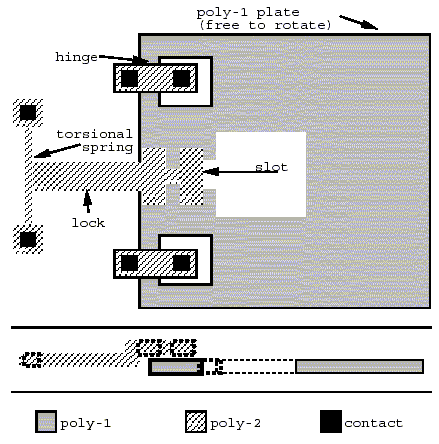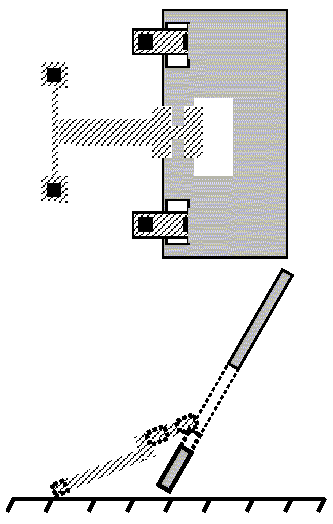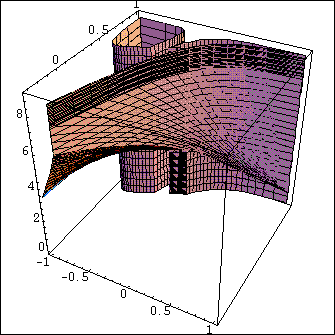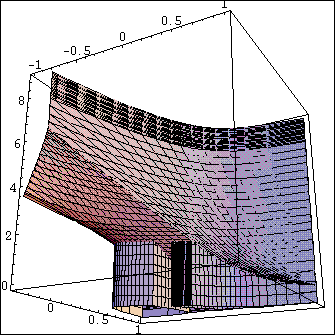Projects Archive
Computational Aspects of the Design of Micro Mechanical Hinged Structures - Towards Design Automation of MEMS (1990-1992)
Team Members
Karl F. Böhringer, Bruce R. Donald (Cornell)
Summary
We are interested in determining the shape of micro mechanical hinged structures, given specifications of their parameterized geometry and their functionality. Interactions between mechanism components are reflected in their configuration space (C-space). Each pair of components in contact is responsible for a surface region in C-space. Adjacency relationships of these regions define a C-space graph whose nodes represent contact states of the mechanism, and whose edges represent physically feasible state transitions. Parameterized components result in parameterized regions, and thus parameterized C-space graphs.
Functionality requirements may dictate properties of parts of the C-space graph, e.g. a certain start or an end state, or a certain path of states. We describe an algorithm that determines values of design parameters such that given functional requirements are satisfied.
Selected Publications
-
Rama Prasad, Karl F. Böhringer, Noel C. MacDonald, "Design, Fabrication, and Characterization of SCS Latching Snap Fasteners for Micro Assembly." ASME International Mechanical Engineering Congress and Exposition (IMECE), no. DSC-16A-1, San Francisco, California, November 12-17, 1995. Paper.
-
Karl F. Böhringer, "A Computational Approach to the Design of Micromechanical Hinged Structures." ACM SIGGRAPH Symposium on Solid Modeling and Applications, pp. 457-458, Montreal, Quebec, Canada, May 1993 (extended abstract / poster).
-
K.-F. Böhringer, "Application of Computational Topology to the Design of Microelectromechanical Structures." Proceedings of the NSF Design and Manufacturing Systems Grantees Conference, Charlotte, North Carolina (January 1993). Paper.
A complete list of our publications (many of them available online) can be found here.
Acknowledgements
-
NSF IRI-8802390, IRI-9000532 and by a Presidential Young Investigaor award to Bruce Donald
-
Air Force Office of Sponsored Research, the Mathematical Sciences Institute, Intel Corporation, and AT&T Bell Laboratories




